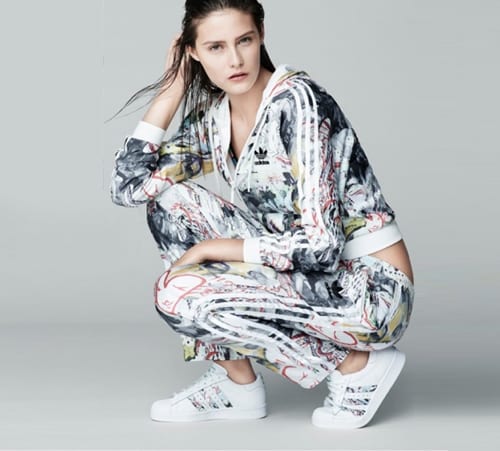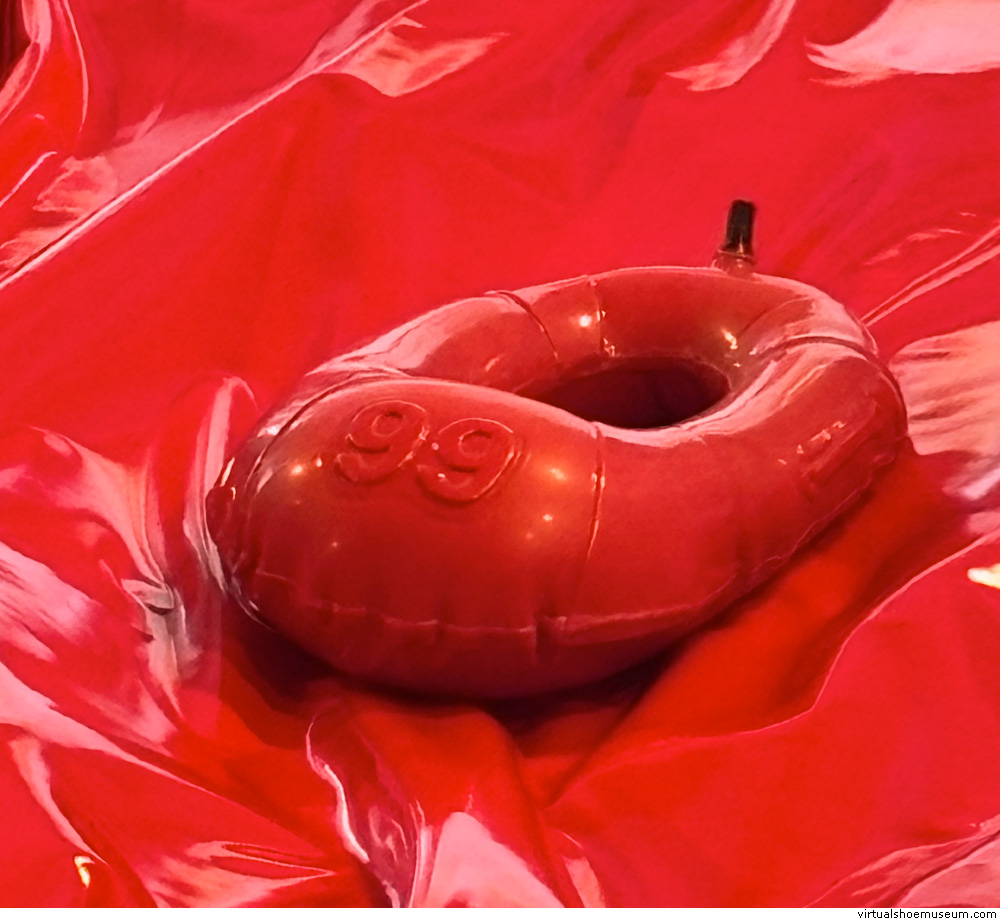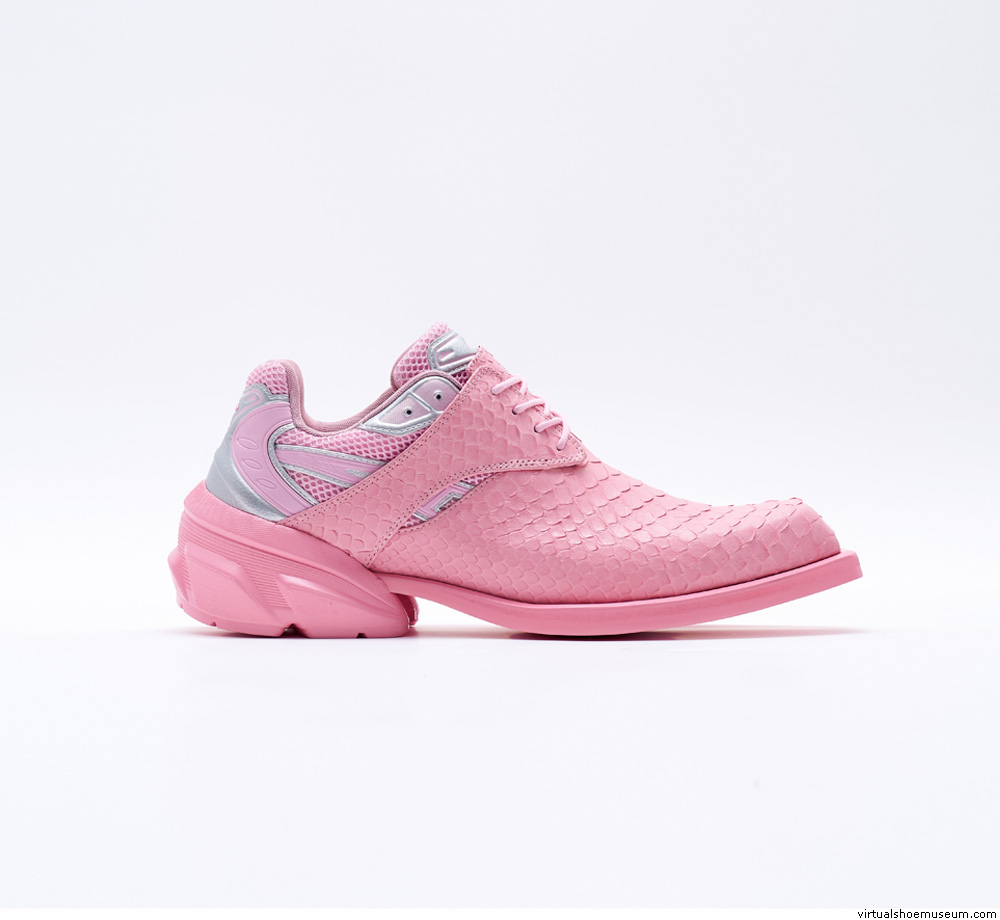Sneakers revolution: from sport to lifestyle
Article by Corinna Meneghetti, part of her thesis ‘Shoes as object of desire, self-identity and expression’. The increasing interest in sporting activities around the end of the 19th century created a demand for more comfortable and suitable footwear for leisure and outdoor activities. Manufacturers started to develop new shapes and material, developing the first athletic shoe.

Although called by various names, the term ‘athletic shoe’ indicates the new category of footwear that was primarily designed for sports or other forms of exercise which later on became a global product and an icon of particular of lifestyle values. The first model worn by people in the late 18th century was a ‘low-tech’ rubber soled shoe called plimsoll in the UK or ‘sneaker’ in America.


The first breakthrough, in 1832, was made when Wait Webster who patented a process whereby rubber could be used to attach soles to uppers and this is what led to the creation of Plimsolls. The big development, however, was vulcanized shoes, created from a newly developed process called vulcanisation – still in use today – which uses heat to meld rubber and cloth together. But it wasn’t until 1917 that manufacturer Goodyear started to advertise a canvas and rubber shoes – called Keds- as an athletic shoe. While Keds were the first to sell trainers on a mass scale, specialist running-spikes had already been around for a long time.
Kends Century Collection 2010
In fact, a further development to the first plimsoll was made in 1852 by a Britain, Joseph William Foster, founder of a company now called Reebok. He decided to add spikes to the bottom of plimsolls creating what we know as running spikes.
Adi Dassler who founded the company Adidas, his brother Rudolph founded Puma.
Many years later it was the turn of a German, Adi Dassler, to take the spikes a step further. Dassler, in fact, created a light range of shoes with hand-forged spikes, differentiating the style depending on purpose and distances. Some years later he opened a company named after him Adidas, established in 1948, to be then split into Adidas and Puma. After one year, the famous three side-stripes were created to give more support to the running shoe.
In the same year, in another part of the world, another iconic sportswear brand was opened by Mr Onitsuka started Onitsuka Co. Ltd later now as ASICS. In the last century trainers evolved from rubber soled plimsolls to air cushioned, gel filled capsules worn as much for their looks as their sporting performance. This happened also thanks to a complex branding and marketing strategy. Famous companies such as Nike, Puma, Adidas, Reebok and others brand developed footwear specifically for any individual sport and they also started to update their styles by creating new models every season.
According to different lifestyle and subcultures, new colours, materials and product innovations, meant that sports footwear has become an essential part of contemporary living and expression of the new leisure culture. Consumer choice when buying sports shoes began to be influenced by the complex marketing strategies of these major brands. Advertising revolves around three essential features that create the value of the footwear: performance, well-being and fashion. Athletics shoes are promoted not just as tools to enhance your performance, but also as a means to bettering yourself through physical exercise and, by doing so, enhancing attractiveness and success. Furthermore, they have become the equipment of style and fashion awareness.
Advertising saw a dramatic transformation of sports footwear that created a lifestyle image, developed during the 60’s and 70’s and enhanced especially during the 80’s and 90’s through prominent sports personalities and branding strategies. This transformed athletic shoes from an object of function to a commodity mix of performance, self-identity and fashion concern. From then on sports footwear has been perceived as a means of self-expression in the same way as other footwear ranges.
Marketing has been central to this transformation of the sport shoe industry and each brand played a big role on the popularizing of the sports shoe; Adidas in the football field, Rebook for aerobics and Nike for running. Therefore, the continuous improvement and development of new technologies has been a stimulus, as was probably the fitness boom of the 70s, which had more influence on the mass consumption of trainers. ‘During the 1990s, shoe companies perfected their fashion and marketing skills. Sports endorsements grew larger and marketing budgets went through the roof. Sneakers became a fashion statement and definition of identity and personality rather than humble athletic aids.’
The design of the footwear, the balance between functional features, protective and innovative materials and strong aesthetic appeal has been pushed further by the merging of sport and fashion.
Prada, Stella McCartney and Vivienne Westwood are just few names that, through their own collection, brought sports shapes and materials out on the catwalk and in the window displays of their ready- to-wear boutique.
Furthermore, an increasing interrelation between sports footwear and the music/dance scene – such as in the 80s hip hop culture and the 90s with the settle grunge – lead to a phenomenon of celebrity style icons consolidating the image of certain kind of footwear as a key element of certain cultural groups. In the last few decades ‘designer sports shoes’ have been consecrated firmly as fashion items and this has been achieved by the increasing number of collaborations between ready to wear designer and sport brands such Puma’s Alexander McQueen, Watanabe for Nike or Yamamoto for Adidas just to mention some of them.
Topshop and Adidas are two of the most talked-about and shopped brands in the market right now for a collaboration: Topshop x Adidas Originals 2014
So, although in the 20th century, the sneaker became a common cultural phenomenon, emphasis on new technologies for athletes and sports footwear nowadays doesn’t refer any longer to just any item of footwear that is intended for sports use, but also refers to footwear intended for everyday life and leisure, becoming one of today’s most fashionable items.
Chapter V.2 from ‘Shoes as object of desire, Self-identity and expression’
Master of Science in Fashion, Design and Luxury Management
A Thesis Submitted to Grenoble Graduate School of Business, 2014
By Corinna Meneghetti, Fashion Design and Creative Management based in Barcelona, Spain.
For more info: [email protected]
Images: Wikipedia: Athletic shoes and Topshop x Adidas Originals 2014.





